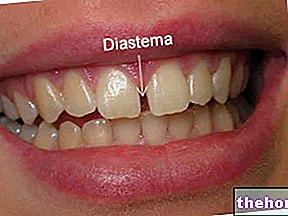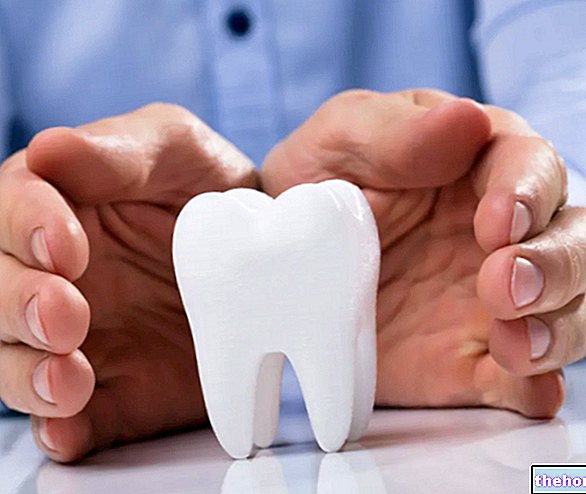Introduction
A tooth severely traumatized by deep infections does not always require extraction. In some cases (many, actually), a tooth affected by pulpits or extensive cariogenic processes can be saved by devitalization.

In this discussion we will try to shed some light, answering the most common doubts that regularly haunt all (or almost) patients on the occasion of severe dental infections. Under what circumstances can a devitalization be performed? Why is the tooth removed surgically in some cases? Is it possible to avoid devitalizing or extracting a tooth?
Generality
To clarify the discussion, it is necessary to dedicate a few lines to the brief description of the two interventions. By doing so, it will be easier to understand, already from a first reading, why in many cases devitalization is preferable to the extraction of a tooth.
DEVITALIZATION
Devitalization (or root canal treatment) is a dental procedure that guarantees the repair of teeth seriously compromised by infections or extensive trauma, such as to irreversibly damage the dental pulp. Devitalization is part of the list of conservative procedures because it is aimed at saving the tooth, removing the damage suffered without resorting to its extraction. In short, devitalization involves first removing the infected dental pulp, then replacing it with a special amalgam and, finally, the reconstruction of the tooth.

From Wikipedia: the various stages of dental devitalization. A) Sick or damaged tooth. B) Trepanation and cleaning. C) Elimination of vessels and nerves up to the apex of the tooth with root canal files (endodontic "files"). D) filling with gutta-percha and covering with prosthetic crown (capsule)
TOOTH EXTRACTION
Also called avulsion, dental extraction is a dental strategy that involves the removal of a tooth from the bone cavity in which it normally resides (alveolus). A tooth is extracted when, for pathological reasons or physical impediments, the permanence in its natural location would create greater damage. Wisdom teeth - as we will see later - are an exception because they can be surgically removed even for purely preventive reasons (to safeguard the correct position and alignment of the other teeth).
Comparison
Many patients who find themselves battling unbearable toothache caused by a profound dental infection are forced to undergo dental surgery. The fate of the tooth will depend on the severity of the infection. Today, with the improvement of dental-surgical strategies, devitalization is an excellent tooth rescue operation: it is performed to cure the underlying pathology and keep the dental element in its natural position. without resorting to extraction.
When is it possible to devitalize the tooth? When, on the other hand, is it necessary to extract it?
To facilitate understanding, we report in the table the main indications of one and the other intervention.
Indications of devitalization
Indications for tooth extraction
- Dental abscess (some)
- Very extensive and deep caries
- Correction of a failed dental procedure
- Teeth that require encapsulation
- Broken teeth
- Badly chipped teeth
- Pulpitis (mostly)
- Dental crowding that cannot be remedied with orthodontic strategies (dental appliance)
- Caries, pulpits and very deep dental abscesses, which cannot be cured with conservative methods
- Dental cysts or granulomas that cannot be healed by apicoectomy
- Severely chipped or rotten teeth
- Impacted teeth (in this case, after extraction, the tooth can be re-transplanted in the correct position)
- Supernumerary teeth
- Advanced piorrea
- Radio / chemotherapy requiring tooth extraction
Infected wisdom teeth
In most cases, the dentist tries to safeguard a tooth affected by deep infections, thus avoiding its forced removal. However, what has been stated is not normally applied to wisdom teeth affected by infections: the functional uselessness of the third molars almost always obliges the surgeon to proceed with the extraction rather than with another conservative intervention. In fact, it would be useless and fruitless to intervene with any dental treatment other than extraction in infected or rotten wisdom teeth. Just think, for example, that sometimes the dentist suggests the extraction of the wisdom tooth even before the eruption through the gum (including tooth), since its presence could alter the structural harmony of the smile (crooked teeth, dental malocclusion, etc.).
Prevention
It is not pleasant to go to the dentist for an unbearable toothache that has persisted for a long time. In all likelihood, this symptom is the first alarm bell of an infection in progress: the patient is therefore aware that, perhaps, an imminent dental intervention is waiting for him.
Whether it is a banal filling or a slightly more complex dental procedure such as devitalization, it does not matter: the fear of the dentist is still a fact. Not to mention when it is necessary to extract the tooth because it is irreversibly damaged by infectious insults that, by now, have gone too deep to be able to save it.
So how to escape from these dental interventions (objectively) unwelcome by those who undergo them?
The only answer to this question can be summed up in a single, simple word: prevention.
To safeguard the health of the teeth it is necessary to observe simple basic rules, often unfortunately underestimated and trivialized:
- Accurate multi-daily home oral hygiene with toothbrush, toothpaste, dental floss and mouthwash
- Professional dental cleaning every 6-12 months to remove non-removable plaque and calculus concretions through daily oral hygiene
- Periodic checks by the dentist to ascertain the optimal state of the teeth
- Teeth sealing to prevent cavities as soon as milk teeth give way to permanent ones
Preventing tooth decay and dental infections is the only solution to keep teeth healthy, strong and in full health. In this way, it is possible to avoid undergoing unpleasant conservative interventions such as devitalization or, even worse, extreme operations such as "tooth extraction.























-nelle-carni-di-maiale.jpg)




